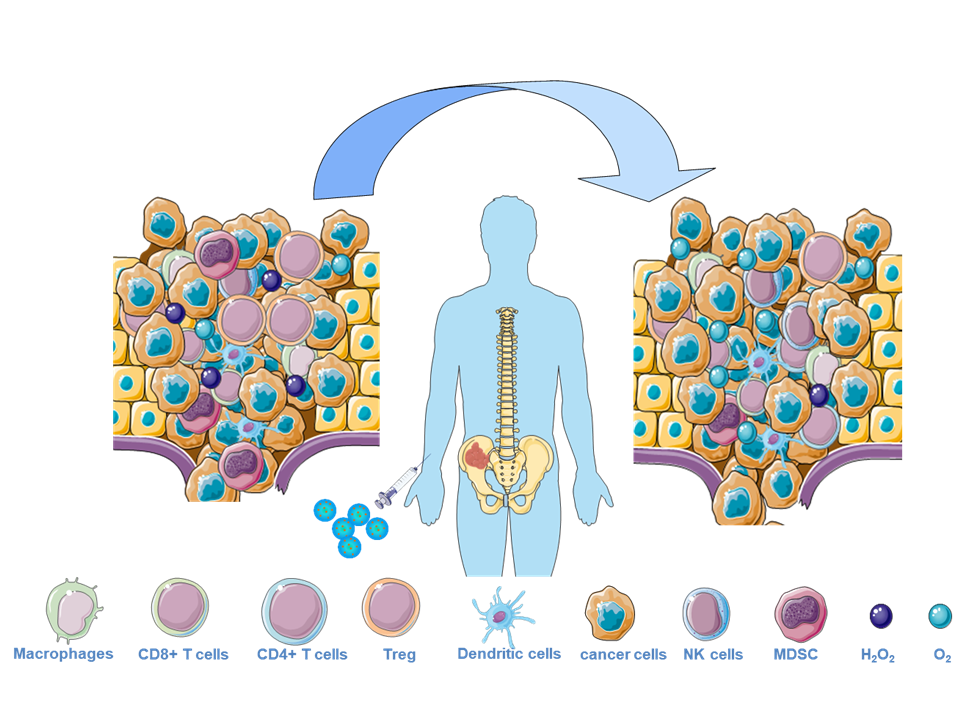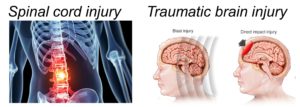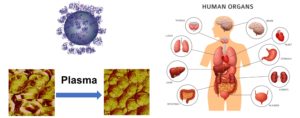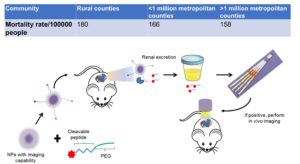Modulation of the tumor microenvironment
Advance-staged cancer that has metastasized remains untreatable and are responsible for most cancer-associated deaths. Immunotherapy such as checkpoint inhibitors and adoptive transfer of cytotoxic immunes cells can mediate robust cancer regression in patients and is emerging as an alternative to conventional therapy. However, tumors develop an immunosuppressive microenvironment that inhibits the activation and function of cytotoxic immune cells. The goal of this project is to develop nanoparticles (NPs) that 1) localize into cancer metastasis; notably, lymph nodes, lungs, and bone and 2) modify the tumor microenvironment to improve the efficacy of immunotherapies.

Modulation of the microenvironment in neurological disorders
Traumatic neurological disorders including spinal cord injuries (SCI) and traumatic brain injuries (TBI) cause disabilities and result in significant socioeconomic burdens. Therefore, finding effective treatments for these traumatic injuries is a national priority. A significant hurdle to recovery from these neurological disorders is the secondary injury which is a cascade of molecular events that results in swelling and hemorrhage that kills successively more nerve cells than the initial injury. Our goal is to use bioactive NPs that modulate tissue microenvironment to decrease the effects of secondary injury to improve patient recovery.

Leveraging the protein corona to improve drug delivery to tissues
The efficacy of NPs as drug delivery systems or as imaging probe is determined in part by their biodistribution and pharmacokinetics. Immediately after their administration in vivo, NPs form a protein corona that influences their recognition by the reticuloendothelial system and determines their half-lives. The type and quantity of the proteins in the NP corona also influence the tissues they accumulate into. Our goal is to design NPs that selectively recruit specific plasma proteins unto their surface as a strategy to improve their pharmacokinetics and localization into tissues of choice.

Urine detectable diagnostic tools
Early disease detection can improve treatment options and outcomes for patients. In less-resourced regions such as rural areas, low early detection rates usually translate to higher mortality as shown in the table below. There is, therefore, the need for diagnostic systems that are cheap and can be administered with little to no training. We are developing urine detectable tools that can be used for cancer diagnosis in less-resourced communities.

